If you've ever found yourself feeling frustrated or dissatisfied with a healthcare provider, you're not alone. Writing a formal complaint can seem daunting, but it's an essential step in voicing your concerns and seeking resolution. By clearly outlining your experience and feelings, you can effectively communicate your issues while also advocating for better care standards. Curious about how to craft the perfect letter? Let's dive into the details!
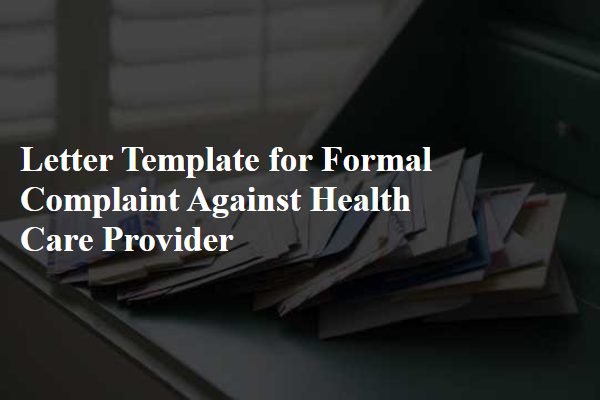
Clear Identification of Parties
A formal complaint against a health care provider must clearly identify the parties involved to ensure that the issue is addressed appropriately. The complainant should state their full name, address, and relevant contact information. The health care provider, whether an individual physician, a medical practice, or a hospital, should be clearly named, along with any pertinent details such as the facility's address and a description of the specific health care services provided. An effective complaint may also include information about the date of the incident, any relevant patient identification numbers, and the nature of the complaint, whether it concerns issues like inadequate care, billing discrepancies, or breaches of patient confidentiality. Clear identification helps in facilitating a prompt and accurate response from the concerned health care authority and ensures accountability.
Detailed Description of Incident
On March 15, 2023, at Sunshine Medical Center located in Springfield, a series of concerning events unfolded during a routine check-up appointment. The appointment, scheduled for 10:00 AM, was significantly delayed, with the attending physician arriving over 45 minutes late without any prior communication. Upon finally being seen, the physician, Dr. Jane Smith, neglected to thoroughly review my medical history, which includes a recent diagnosis of hypertension. This oversight led to a rushed examination lasting less than 10 minutes, where my blood pressure was not measured, contravening standard procedure. Additionally, Dr. Smith failed to address my concerns about medication side effects, dismissing them in a brief, condescending manner. The overall experience created a distressing atmosphere, raising serious doubts about the quality of care provided at this facility, impacting my health and well-being moving forward.
Supporting Evidence and Documentation
When filing a formal complaint against a healthcare provider, it is essential to include comprehensive supporting evidence and documentation to substantiate the claims being made. This can encompass medical records detailing treatments received, including discharge summaries, and progress notes from specific dates, highlighting any discrepancies or inadequate care. Invoices or billing statements showcasing discrepancies in charges or services rendered can also serve as critical evidence. Photographs of medical conditions, if applicable, can provide visual proof of negligence or malpractice experienced. Patient testimonials or statements can reinforce the individual's experience and validate concerns regarding care quality. Furthermore, correspondence with the healthcare provider, such as emails or letters discussing the issues, can illustrate attempts made to resolve the matter informally before escalating it to a formal complaint. Collectively, these documents convey a compelling narrative of the situation, crucial for any regulatory body reviewing the complaint.
Desired Resolution or Outcome
A formal complaint against a health care provider often seeks the desired resolution of improved patient care standards and accountability measures. Enhanced training for staff (targeting areas such as bedside manner and communication) is crucial to prevent future incidents. Establishing a clear protocol for addressing patient concerns promptly can restore trust and confidence in the facility. Additionally, implementing regular feedback mechanisms, such as surveys post-visit, may provide insights into patient experiences and allow for continuous improvement. A thorough investigation into the reported incident and a written response detailing corrective actions taken will demonstrate the provider's commitment to high-quality care. Financial compensation for any distress caused may also be included in the resolution expectations.
Contact Information for Follow-Up
Contact information for follow-up regarding formal complaints against healthcare providers typically includes essential details such as the complainant's full name, address, and phone number for direct communication. Additionally, including an email address ensures efficient correspondence and swift responses. The healthcare provider's name, facility name, and relevant contact details, such as a designated complaint department or a specific management representative's name, are essential for directing the follow-up effectively. Compliance with confidentiality norms and privacy regulations, such as HIPAA in the United States, should also be noted to ensure that all shared information remains secure. Keeping a record of all communications in relation to the complaint, including dates and topics discussed, provides a thorough overview for future references.

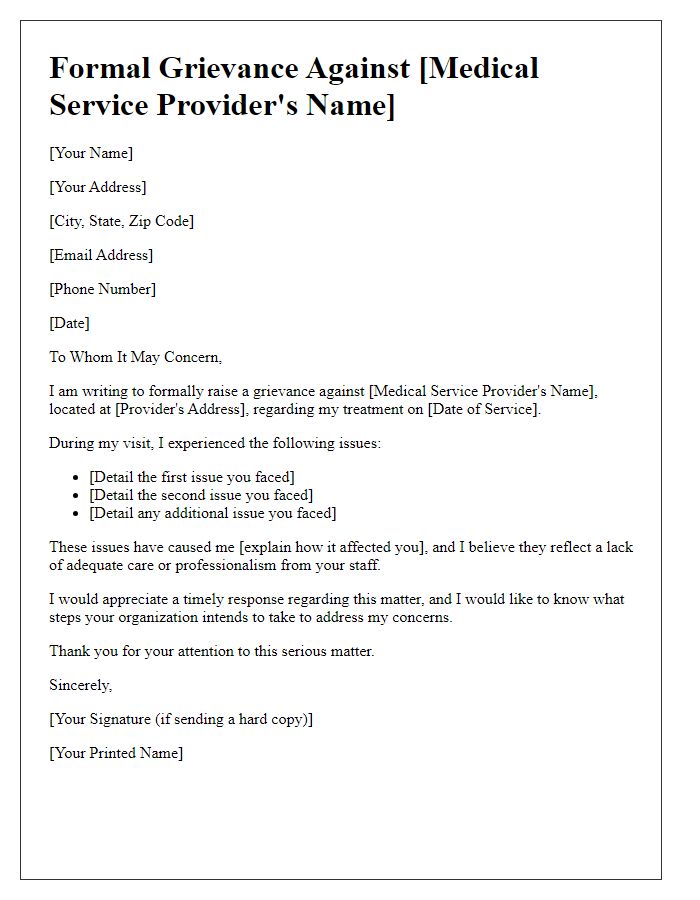
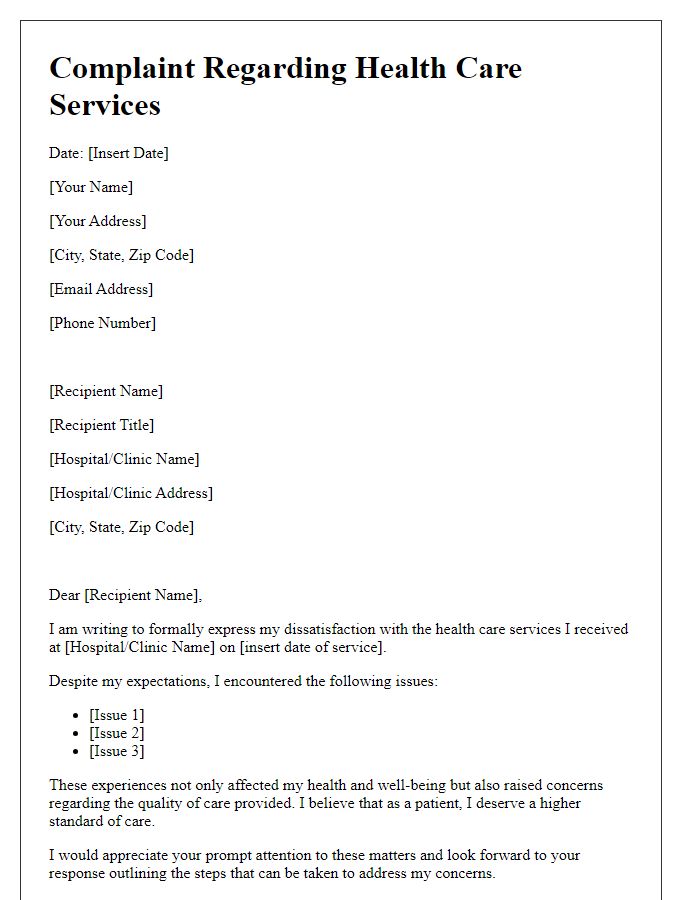
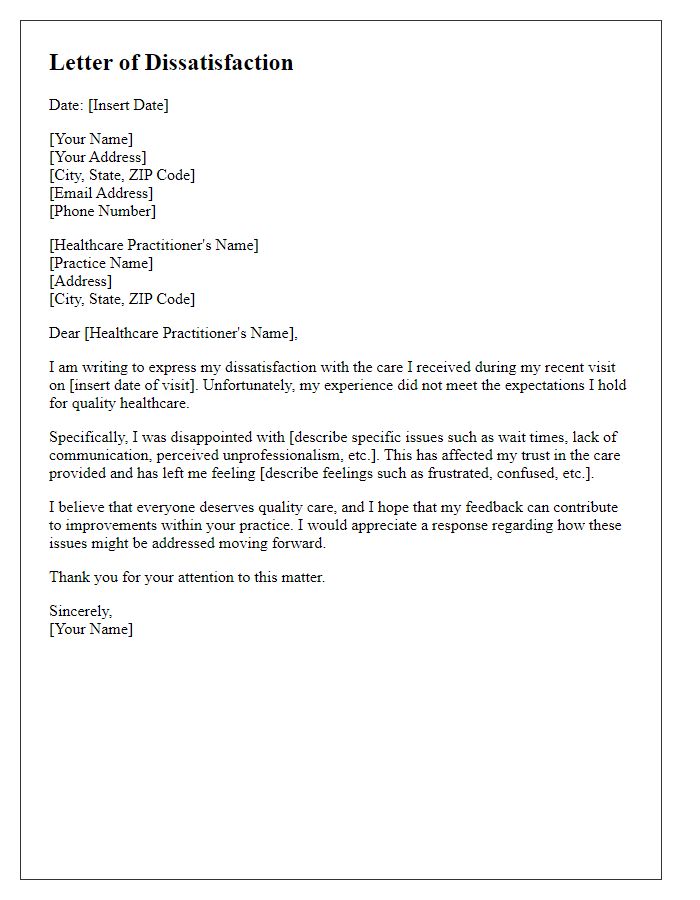
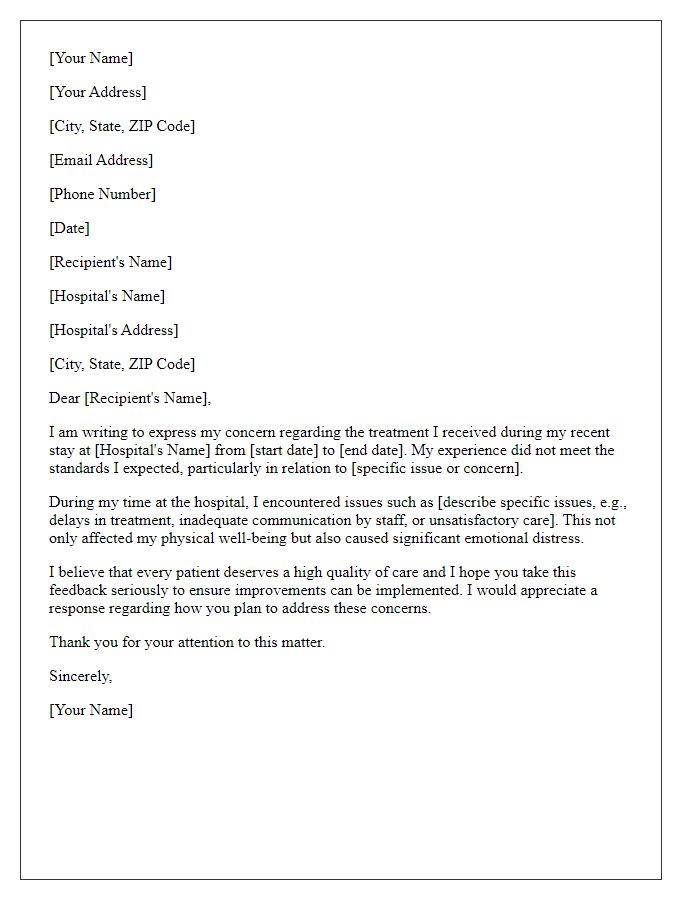
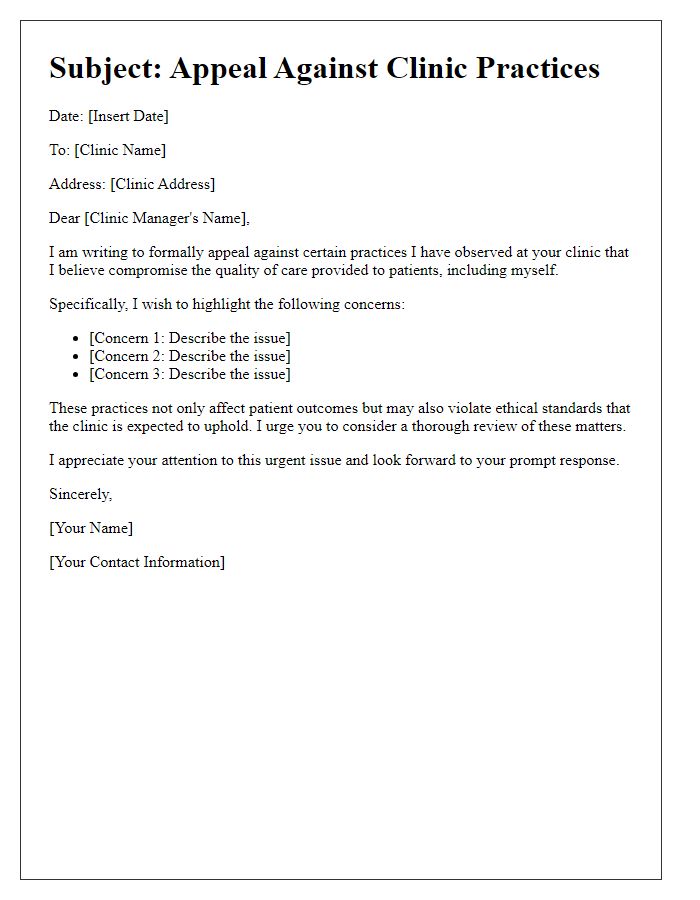
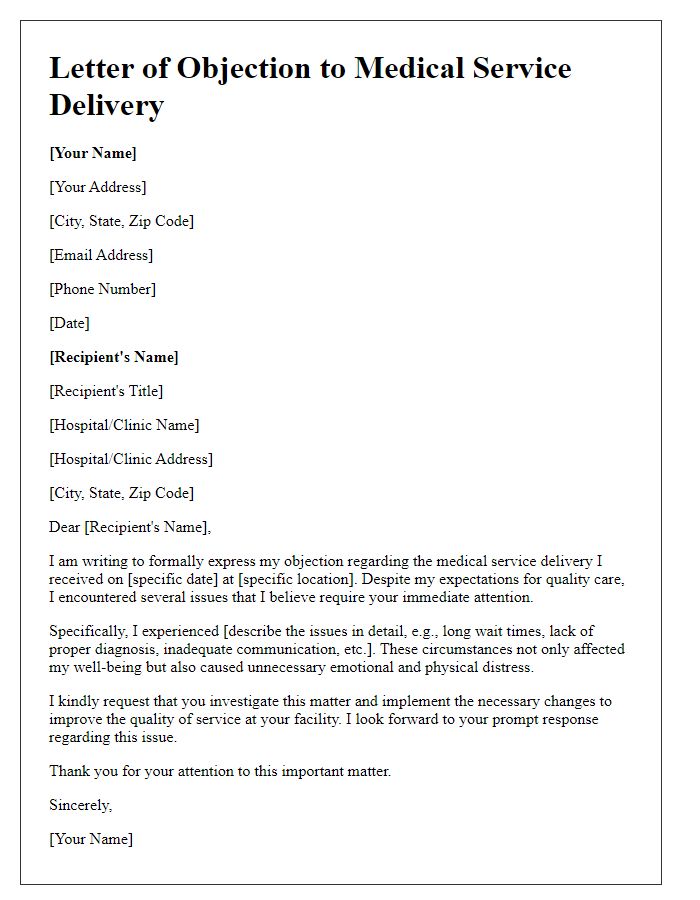
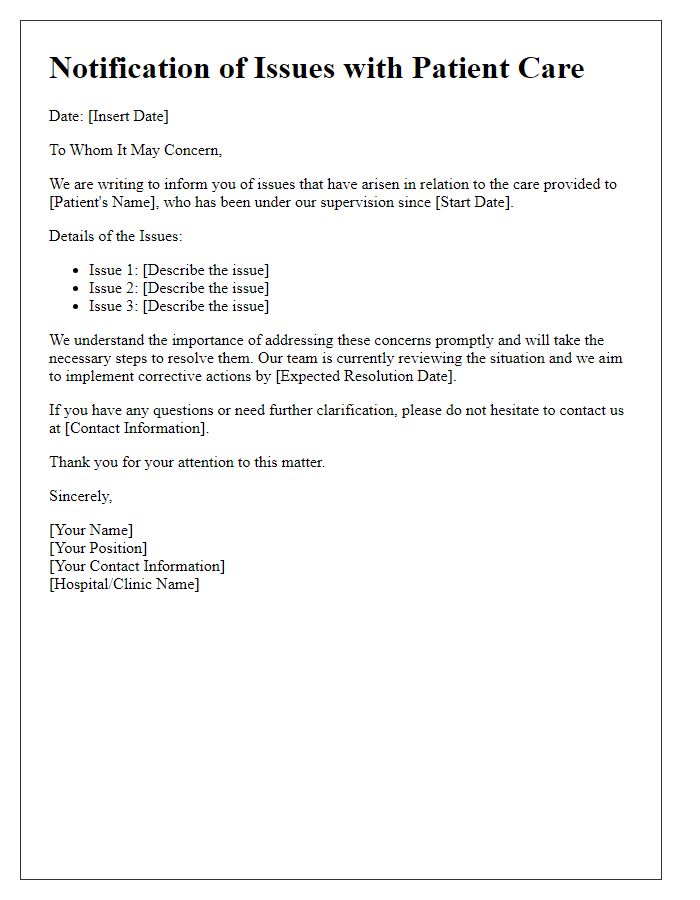
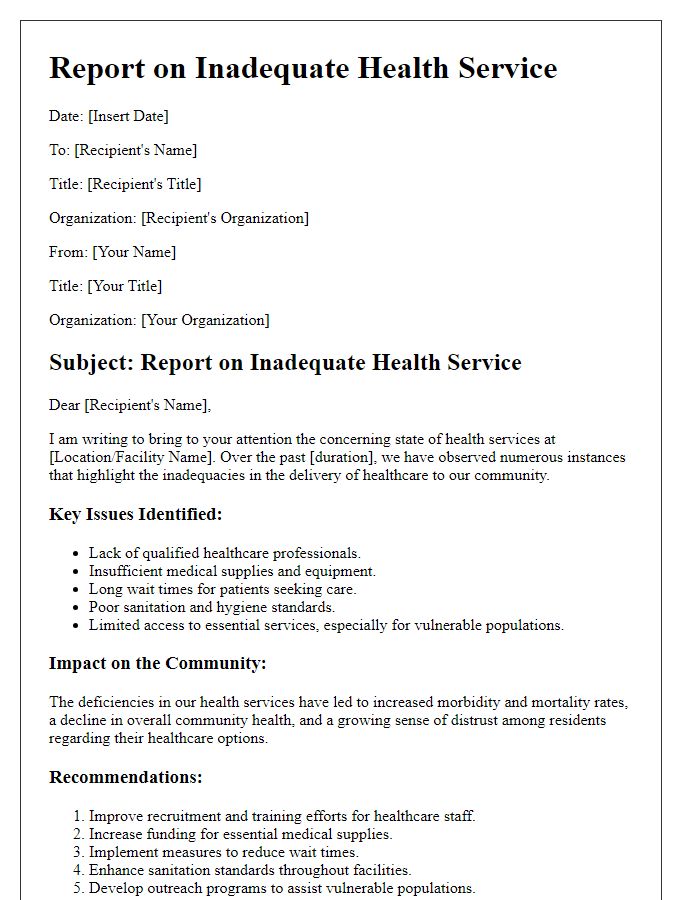




Comments